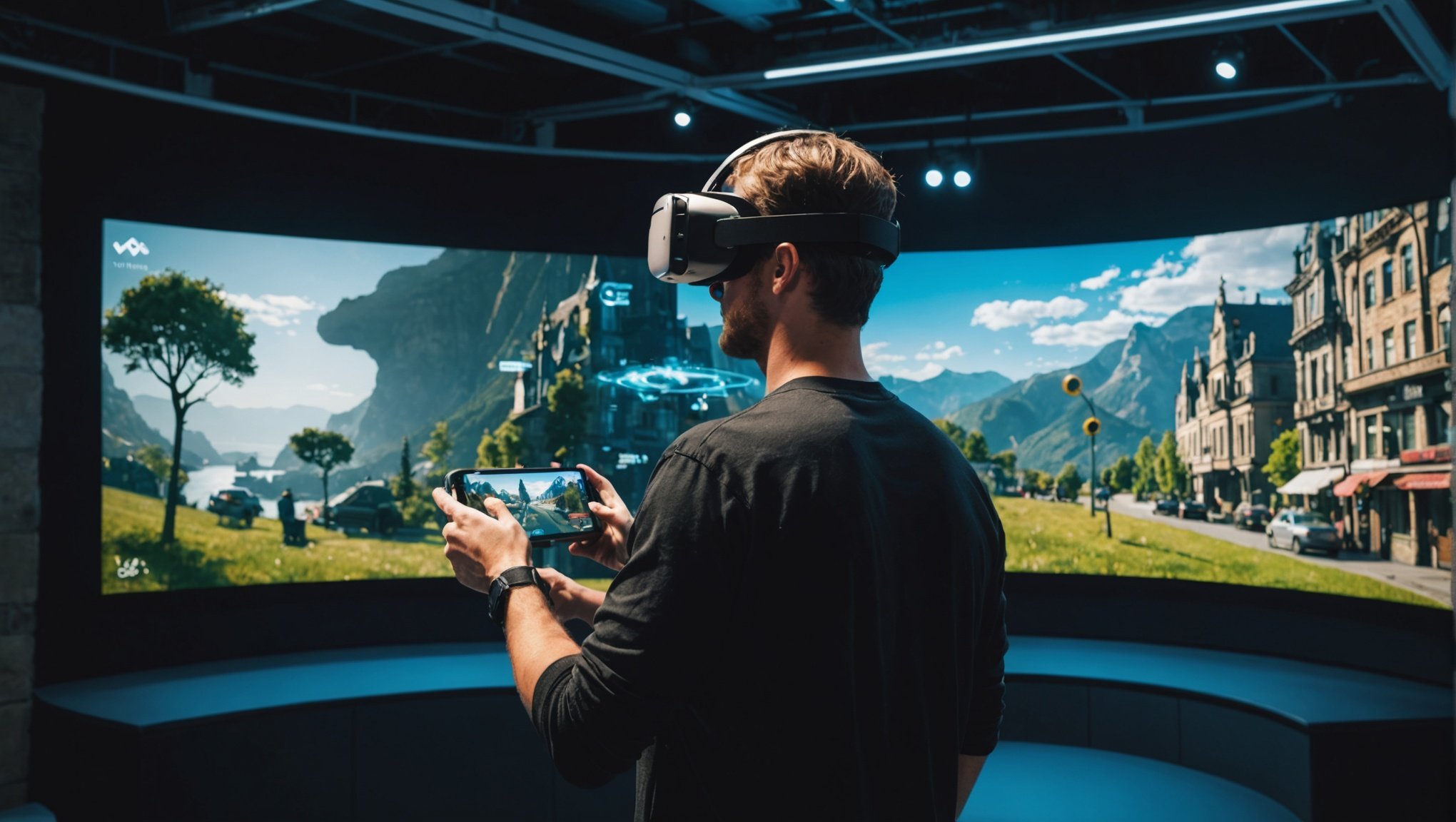In recent years, the world of gaming has seen an explosion of revolutionary technology advancements. Among these, the rise of Virtual Reality (VR) and Augmented Reality (AR) devices stands out. These cutting-edge technologies promise to take gaming to entirely new levels, providing immersive experiences that were previously unimaginable. However, they also present a unique set of challenges for game developers. In this article, we’ll dive deep into the complexities of developing games for hybrid VR/AR devices.
Understanding VR and AR
Before we delve into the challenges, let’s take a moment to understand precisely what VR and AR entail. Virtual Reality (VR) is a simulated experience that can either mirror the real world or be entirely different. VR devices typically use headsets to provide users with an immersive experience that makes them feel as if they are in a different place or world.
In parallel : How can developers integrate photogrammetry with procedural generation to enhance realism in open-world games?
On the other hand, Augmented Reality (AR) superimposes digital elements onto the real world, providing an enhanced version of reality. With AR, users can interact with virtual content in their real-world environment, often via smartphones or AR glasses.
Now, imagine a device that combines AR and VR – that’s a hybrid AR/VR device. These innovative gadgets offer the best of both worlds, enabling users to transition seamlessly between real and virtual environments.
Have you seen this : What are the considerations for designing multilingual dialogue systems in narrative-driven games?
The Technical Complexities
Developing games for hybrid VR/AR devices is an intricate task that requires a blend of creativity, technical expertise, and a thorough understanding of the user experience. One of the significant challenges in this endeavor is the technical complexity associated with these devices.
The biggest technical hurdle is arguably the creation of realistic, immersive environments. This demands intensive graphics that can strain device processors, leading to latency issues. Additionally, achieving seamless transition between VR and AR modes can be difficult, as each mode requires different display and interaction techniques. For instance, while VR may need stereoscopic 3D displays and full motion tracking, AR might require transparent displays and touch or gesture interactions.
Moreover, developers have to grapple with the problem of device compatibility. There’s a wide range of VR/AR devices on the market, each with different systems and capabilities. Creating games that are compatible across different devices can be a daunting task.
User Comfort and Safety
Another hurdle in the development of games for hybrid VR/AR devices is ensuring user comfort and safety. VR and AR experiences are intense and can cause motion sickness, eye strain, and disorientation in some users. These issues are primarily due to the discrepancy between what users see in the virtual environment and what they feel in the physical world.
Game developers need to design their games in such a way that minimizes these issues. This may involve using subtle cues to help orient the player or designing the gameplay to reduce rapid movements that could cause motion sickness.
Safety is also of paramount importance. As users are often unable to see their real-world environment while immersed in VR, developers need to implement safeguards to prevent accidents. This could range from setting up boundaries within the game to alerting users of potential obstacles in their real-world environment.
High Development Costs
Developing games for hybrid VR/AR devices can be a costly venture. The high costs stem from the need for specialized skills, expensive hardware, and time-consuming development processes.
Developers need to understand the unique nuances and capabilities of VR/AR devices to create compelling and immersive games. This often requires specialized training or hiring experienced professionals, which adds to the cost.
Additionally, the hardware needed for VR/AR game development can be quite expensive. Developers need high-performance computers, VR headsets, motion tracking systems, and possibly even 3D scanners and printers for prototyping.
Finally, the development process for VR/AR games can be long and arduous. Testing and debugging are particularly challenging, as problems may only become apparent when the game is played in a VR/AR environment. This results in higher development costs and longer time to market.
Need for Unique Game Design
The last challenge we’ll discuss is the need for unique game design. Traditional game design principles often don’t apply to VR/AR games. Developers need to rethink everything from the game’s controls to its interface and narrative structure.
In VR/AR games, players are not just observers but active participants who interact with the game environment in a much more physical way. This requires a completely different approach to game design, one that prioritizes immersion and interactivity.
However, designing games that are engaging and fun while still taking advantage of the unique capabilities of VR/AR devices is no easy task. It requires a delicate balance of creativity and technical know-how, pushing developers to constantly innovate and think outside the box.
In summary, while hybrid VR/AR devices offer exciting new possibilities for game development, they also present a unique set of challenges. Game developers need to navigate these hurdles while continually pushing the boundaries of what’s possible, to create truly immersive and engaging gaming experiences. It’s a tough job, but the potential rewards – in terms of creating groundbreaking games that captivate players like never before – make it all worth it.
The Future of Hybrid VR/AR Gaming
Looking ahead, the future of hybrid VR/AR gaming is promising despite the challenges. As technology continues to evolve and improve, many of the current hurdles are expected to decrease. For example, advancements in processor technology and graphics rendering could make it easier for developers to create realistic, immersive environments without straining device capabilities.
Furthermore, as more developers gain experience with hybrid VR/AR devices, they’ll become more adept at designing games that ensure user comfort and safety, minimize motion sickness, and take full advantage of VR/AR capabilities. The growing popularity of VR/AR gaming will also likely lead to an increase in standardized development practices and tools, making it easier and more cost-effective for developers to create games for these devices.
However, the success of hybrid VR/AR gaming will depend not just on technological advancements, but also on developers’ ability to create engaging, immersive games that captivate players. It’s not enough to simply create a game that works with hybrid VR/AR devices; the game also has to be fun to play and offer a truly unique experience.
Developing games for hybrid VR/AR devices is a complex and challenging task, but it’s also an exciting opportunity to push the boundaries of what’s possible in gaming. The challenges – from technical complexities to user comfort and safety, high development costs, and the need for unique game design – are significant, but they’re also opportunities for innovation and creativity.
As we look to the future, we can expect to see many exciting developments in this field. With the continued advancement of technology and the increasing sophistication of game developers, we’ll undoubtedly see games that not only overcome the current challenges associated with hybrid VR/AR devices but also take full advantage of the unique capabilities of these devices to deliver truly immersive, engaging, and revolutionary gaming experiences.
It’s an exciting time to be a game developer and a gamer. The challenge is tough, but the potential rewards – in terms of creating groundbreaking games that captivate players like never before – are immense. Despite the hurdles, the future of hybrid VR/AR gaming looks bright, and we can’t wait to see what’s next.











